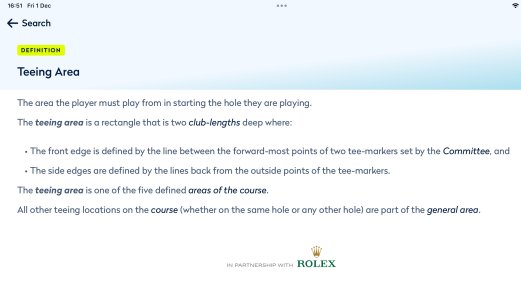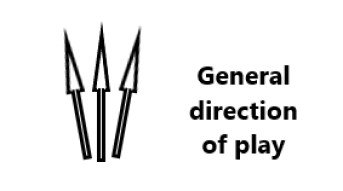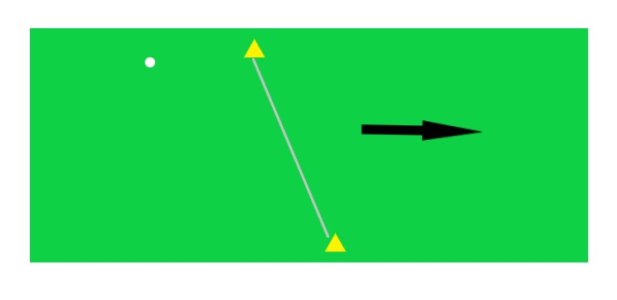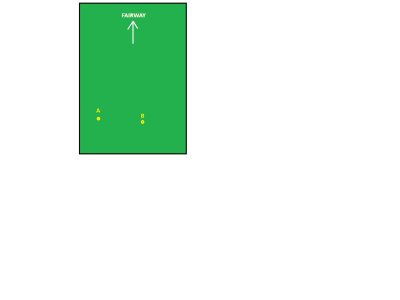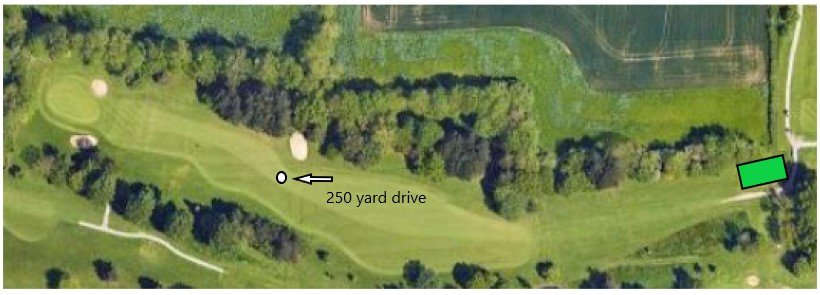rulefan
Tour Winner
Yes. the area is enclosed by lines at right angles to the line joining the front of the tee markers. ie the two vertical dotted lines in the diagram. The ? ball is outside the area.The teeing area is a rectangle, not a parallelogram
At any rate, the direction of play might be different for different golfers.

